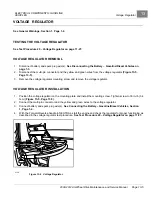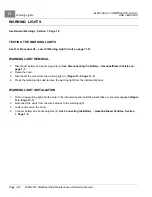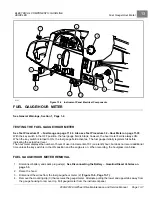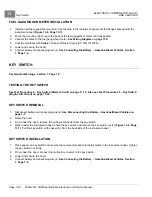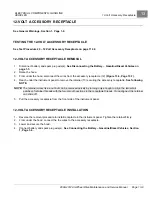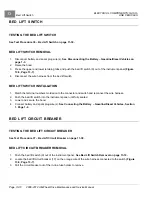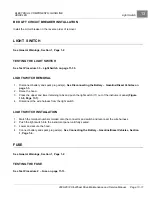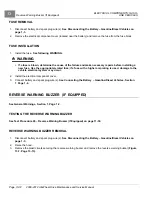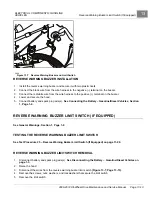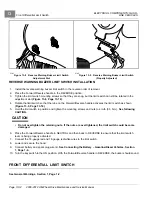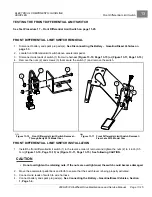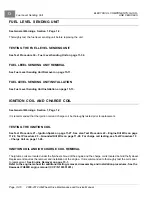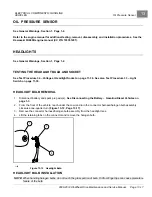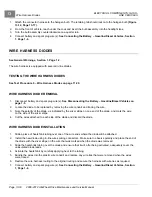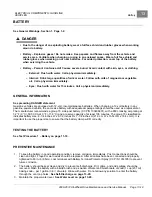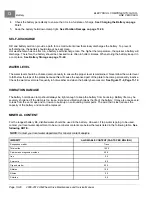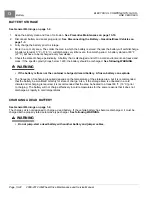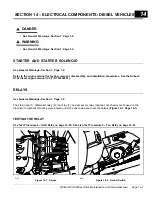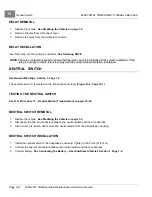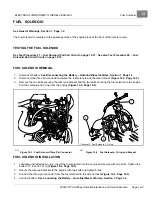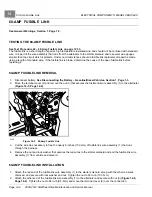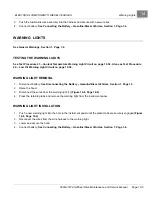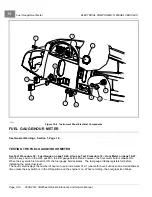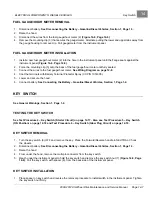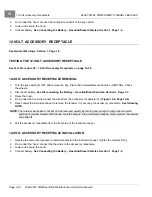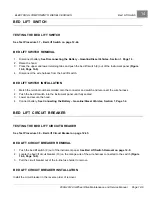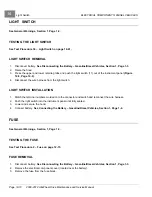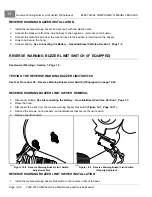
ELECTRICAL COMPONENTS: GASOLINE
VEHICLES
Battery
13
BATTERY
See General Warnings, Section 1, Page 1-2.
DANGER
• Due to the danger of an exploding battery, wear a full face shield and rubber gloves when working
around a battery.
• Battery – Explosive gases! Do not smoke. Keep sparks and flames away from the vehicle and
service area. Ventilate when charging or using in an enclosed space. Wear a full face shield and
rubber gloves when working on or near batteries. For added protection, cover top of the battery
when servicing the vehicle.
• Battery – Poison! Contains acid! Causes severe burns! Avoid contact with skin, eyes, or clothing.
– External: Flush with water. Call a physician immediately.
– Internal: Drink large quantities of milk or water. Follow with milk of magnesia or vegetable
oil. Call a physician immediately.
– Eyes: Flush with water for 15 minutes. Call a physician immediately.
GENERAL INFORMATION
See preceding DANGER statement.
Gasoline vehicles are equipped with 12-volt, low-maintenance batteries. When changing a 12-volt battery in any
gasoline-powered vehicle, the same size battery with adequate amperage ratings should be used as a replacement.
The manufacturer recommends a group 70, side-post battery (CC P/N 103496801), with a 650 cranking amp rating at
32 °F (0 °C), 500 CCA at 0 °F (-17.8 °C) and a reserve capacity of at least 105 minutes. The group 70 classification
indicates battery size: 8-1/4 inches W x 6-1/2 inches D x 7-1/4 inches H (21.0 cm W x 16.5cm D x 18.4 cm H). It is
important to use the proper size to ensure that the battery clamp will fit correctly.
TESTING THE BATTERY
See Test Procedure 1 – Battery on page 11-10.
PREVENTIVE MAINTENANCE
1.
To keep the battery in good operating condition, remove corrosion immediately. Post connections should be
clean and tight. Frayed or worn wires should be replaced. After all cables have been connected and properly
tightened to 80 in-lb (9 N·m), coat terminals with Battery Terminal Protector Spray (CC P/N 1014305) to prevent
future corrosion.
2.
The battery should be kept clean and dry to prevent self-discharge. Dirt, grime, and acid spillage should be
removed. Wash the battery with a bristle brush and a solution of water and bicarbonate of soda (1 cup (237 ml)
baking soda – per 1 gallon (3.8 l) of water). Rinse with water. Do not allow any solution to enter the battery
through the vent cap holes.
See Self-Discharge on page 13-20.
3.
Maintain the proper water level.
See Water Level on page 13-20.
2008-2012 All-Wheel Drive Maintenance and Service Manual
Page 13-19
Summary of Contents for Carryall 295 SE
Page 2: ......
Page 20: ......
Page 28: ......
Page 58: ......
Page 66: ......
Page 100: ......
Page 122: ......
Page 150: ......
Page 157: ......
Page 190: ......
Page 197: ......
Page 236: ......
Page 284: ......
Page 386: ......
Page 394: ......
Page 442: ......
Page 452: ......
Page 454: ......
Page 455: ......
Page 456: ......

